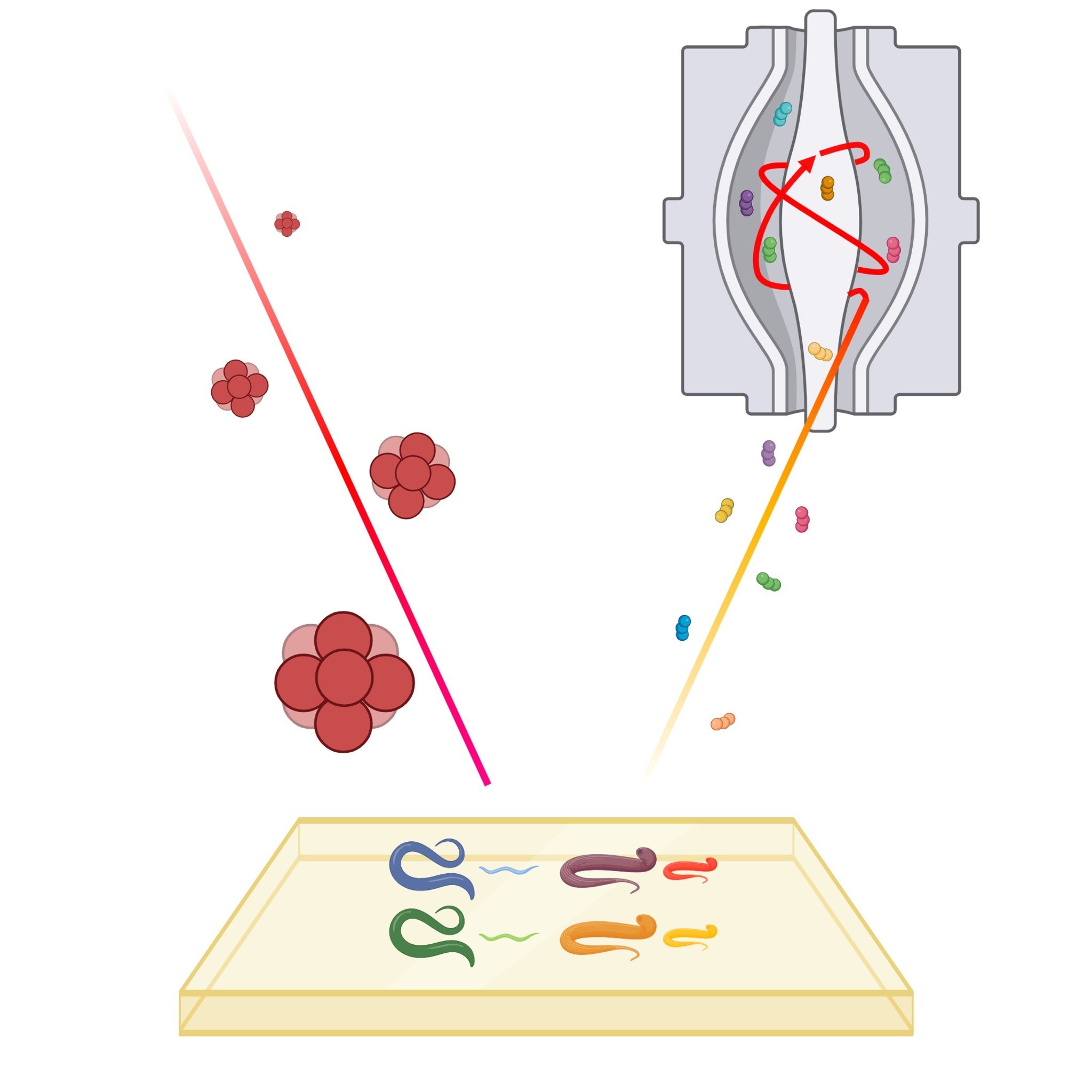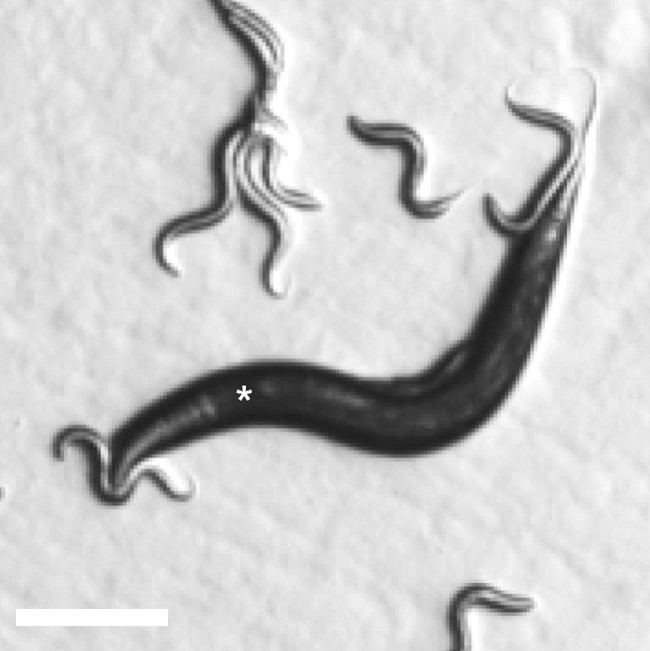A new study has revealed the clearest-ever picture of the surface chemistry of worm species that provides groundbreaking insights into how animals interact with their environment and each other. These discoveries could pave the way for strategies to deepen our understanding of evolutionary adaptations, refine behavioural research, and ultimately overcome parasitic infections.
Scientists from the University's School of Pharmacy used an advanced mass spectrometry imaging system to examine the nematodesCaenorhabditis elegans and Pristionchus pacificus, aiming to characterise species-specific surface chemical composition and its roles in physiology and behaviour. Their results show that nematode surfaces are predominantly oily or lipid-based, forming a complex chemical landscape. The findings have been published today in the journal JACS.
Nematodes, or worms, are found in nearly every environment on Earth, including inside animals, soil, plants, seeds, water, and even humans. Infections caused by nematodes can lead to serious health conditions in severe cases.
This research was led by Dr Veeren Chauhan, an Assistant Professor in Whole Organism Analytics at the School of Pharmacy,
Nematodes are an excellent model for human biology and are considered to be some of the most completely understood animals on the planet - especially in terms of genetics, neurology and developmental biology. We share around 60-70% of our DNA with these worms so any new discoveries about them can significantly enhance our understanding of human biology and can contribute towards solving global human health challenges.
Dr Chauhan continues: "Using world-leading mass spectrometry facilities, we studied the surface chemical properties of nematodes throughout their development. This allowed us to track molecular changes in detail and observe how surface chemistry differs during development, varies between species, and, importantly, influences their interactions with one another."
The team used the state-of-the-art 3D-OrbiSIMS instrument at the University of Nottingham to reveal that the surface chemistry of both worm species change over time and they are made up of predominantly lipids, which account for approximately 70-80% of the molecular composition.

The University of Nottingham was one of the first institutions in the world to obtain a 3D-OrbiSIMS instrument. This instrument enables an unprecedented level of mass spectral molecular analysis across a range of materials, including hard and soft matter as well as biological cells and tissues. When the surface sensitivity, high mass resolution and spatial resolution, are combined with a depth profiling sputtering beam, the instrument becomes an extremely powerful tool for chemical analysis as demonstrated in this recent work.
Dr Chauhan continues: "Discovering that these worms have predominantly oily, or lipid-based, surface is a significant step in understanding their biology. These lipid surfaces help maintain hydration and provide a barrier against bacteria, which are essential for their survival. What is also very interesting is that these lipids also appear to serve as chemical cues that influence interspecies interactions, such as predation. For example, the predatory behaviour of Pristionchus pacificus is guided by physical contact with the surface lipids of its prey, Caenorhabditis elegans, and alterations in these lipids can increase the susceptibility of the prey to predation.
Gaining this level of understanding of the surface chemistries of these worms and how they influence interaction and survival opens up new areas of scientific discovery and could ultimately help in developing strategies to fight parasitic worms and the diseases that they cause."

This research was conducted in collaboration with the Lightfoot Lab, led by Dr James Lightfoot, at the Max Planck Institute for Neurobiology of Behavior – caesar in Bonn, Germany. This work was funded by a Nottingham Research Fellowship (University of Nottingham), the Engineering and Physical Sciences Research Council, the Max Planck Society, and by the German Research Foundation.






